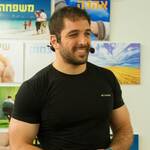PainRelief.com Interview with:
Afik Faerman, PhD
NIMH T32 Postdoctoral Fellow
Psychiatry and Behavioral Sciences
Stanford University
President-elect
Division 30 (Psychological Hypnosis)
American Psychological Association

PainRelief.com: What is the background for this study?
Response: Hypnosis offers an effective drug-free approach to treat a variety of psychophysiological symptoms, particularly pain. Unfortunately, not everyone benefits equally from hypnosis. The ability to experience suggestions in hypnosis (hypnotizability) is distributed in a bell-shaped curve across the population, with only about 20% considered highly hypnotizable. We wanted to test if we could make the brains of people who were not highly hypnotizable act and function as if they were, hoping such a possibility would open the door for improving therapy.
Several brain structures were previously linked to responsiveness to hypnosis, and modulating them could, theoretically, increase hypnotizability. Based on previous work, we created an approach (termed SHIFT) using individual brain scans to find the best part of the brain to stimulate.

